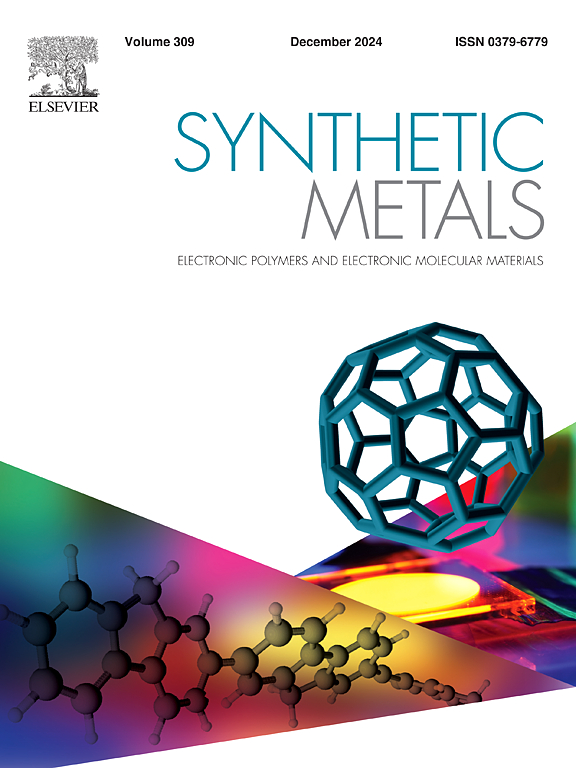Production of rGO based hybrid composite buckypaper cathodes by using copper oxide polysulfide adsorbent for Li-S batteries
IF 4
3区 材料科学
Q2 MATERIALS SCIENCE, MULTIDISCIPLINARY
引用次数: 0
Abstract
Lithium-sulfur batteries are particularly noteworthy for applications requiring large capacity and long battery life. Transition metal oxides have emerged as polar host materials for lithium polysulfides to further modulate the bonding energy with polysulfides and increase the coupling density of the electrodes. Polar metal oxides naturally adsorb polysulfides on their hydrophilic surfaces. In this study, the polysulfide adsorbing ability of CuO against the shuttle effect is utilized. For this purpose, copper(II) oxide (CuO) is used as polysulfide adsorbent and CuO - reduced Graphene Oxide / Sulphur (CuO-rGO/S) hybrid composite buckypaper electrodes are produced as cathodes in Li-S batteries without using binders. In this work, optical, morphological and structural analyzes of composite films were carried out by Fourier transformed infrared spectroscopy (FT-IR), Raman spectroscopy, field emission gun scanning electron microscopy (FEG-SEM), energy dispersive X-ray spectroscopy (EDS), X-ray diffraction (XRD), X-ray photoelectron spectroscopy (XPS), and Brunauer-Emmett-Teller (BET) analysis, respectively. After the CR2032 button cell was assembled using the produced cathode materials, cyclic voltammetry (CV), charge-discharge performance tests, rate capability and electrochemical impedance spectroscopy (EIS) analyzes were performed to investigate the Li-S battery capacities. With the CuO-rGO/S hybrid composite cathode containing 2 % CuO, a discharge capacity of 1205 mAh g−1 was obtained in the first cycle. At the end of the 1000 cycles, the discharge capacity of the cathode was achieved as high as 696 mAh g−1. As a result, the battery capacity of rGO/S-based composite electrodes has been improved by taking advantage of CuO added to the cathode structure to adsorb polysulfides.
利用多硫化氧化铜吸附剂为锂-S 电池生产基于 rGO 的混合复合降压纸阴极
锂硫电池在要求大容量和长寿命的应用中尤其值得关注。过渡金属氧化物已成为多硫化锂的极性宿主材料,可进一步调节与多硫化物的键能并提高电极的耦合密度。极性金属氧化物可在其亲水表面自然吸附多硫化物。本研究利用了 CuO 对多硫化物的吸附能力来对抗穿梭效应。为此,使用氧化铜(CuO)作为多硫化物吸附剂,并在不使用粘合剂的情况下,将氧化铜-还原氧化石墨烯/硫(CuO-rGO/S)复合降压纸电极制成锂-S 电池的阴极。在这项工作中,分别通过傅立叶变换红外光谱(FT-IR)、拉曼光谱、场发射枪扫描电子显微镜(FEG-SEM)、能量色散 X 射线光谱(EDS)、X 射线衍射(XRD)、X 射线光电子能谱(XPS)和布鲁瑙尔-艾美特-泰勒(BET)分析对复合薄膜进行了光学、形态和结构分析。使用所生产的阴极材料组装 CR2032 纽扣电池后,进行了循环伏安法(CV)、充放电性能测试、速率能力和电化学阻抗谱(EIS)分析,以研究锂-S 电池的容量。含 2% CuO 的 CuO-rGO/S 混合阴极在第一个循环中获得了 1205 mAh g-1 的放电容量。在 1000 个循环结束时,阴极的放电容量高达 696 mAh g-1。因此,通过在阴极结构中添加 CuO 以吸附多硫化物,rGO/S 基复合电极的电池容量得到了提高。
本文章由计算机程序翻译,如有差异,请以英文原文为准。
求助全文
约1分钟内获得全文
求助全文
来源期刊

Synthetic Metals
工程技术-材料科学:综合
CiteScore
8.30
自引率
4.50%
发文量
189
审稿时长
33 days
期刊介绍:
This journal is an international medium for the rapid publication of original research papers, short communications and subject reviews dealing with research on and applications of electronic polymers and electronic molecular materials including novel carbon architectures. These functional materials have the properties of metals, semiconductors or magnets and are distinguishable from elemental and alloy/binary metals, semiconductors and magnets.
 求助内容:
求助内容: 应助结果提醒方式:
应助结果提醒方式:


